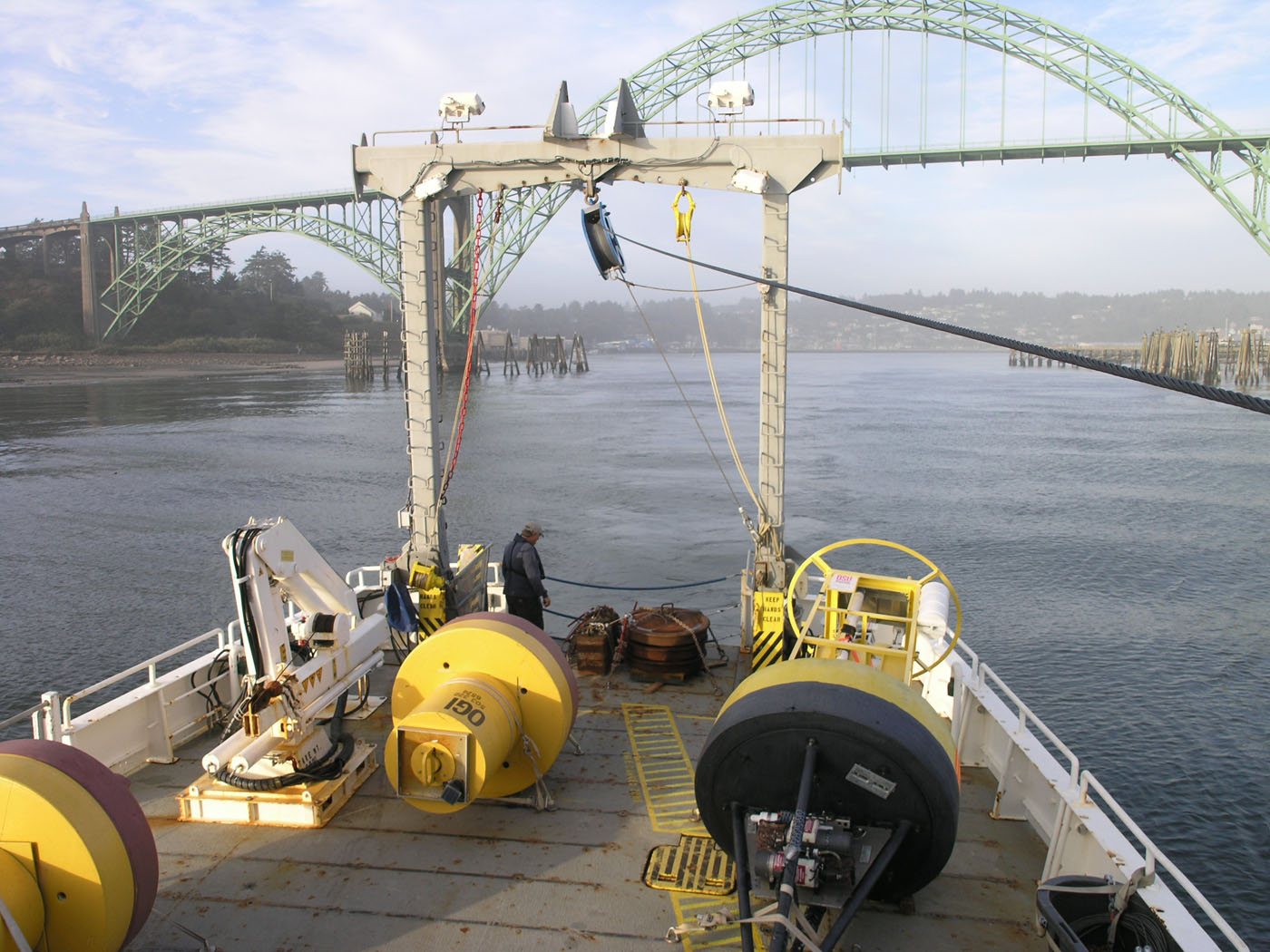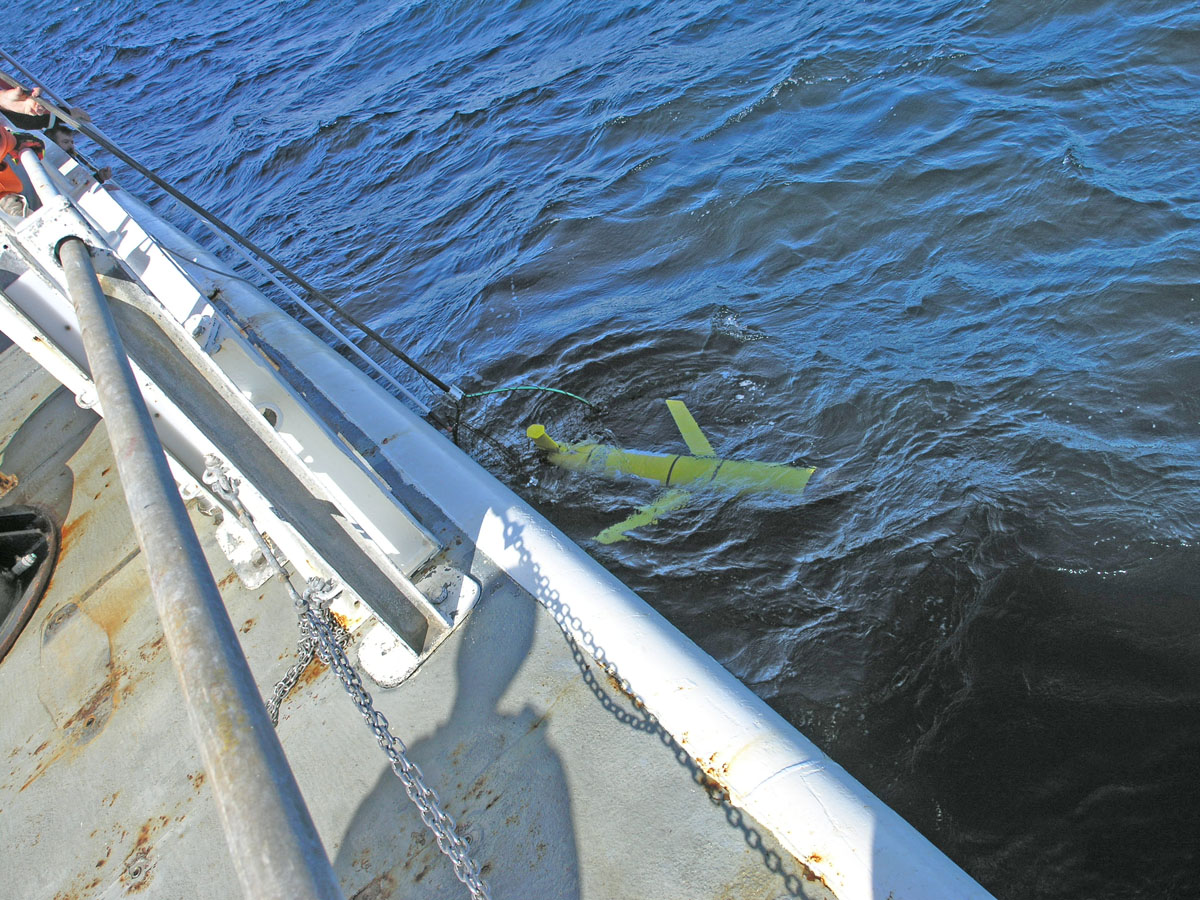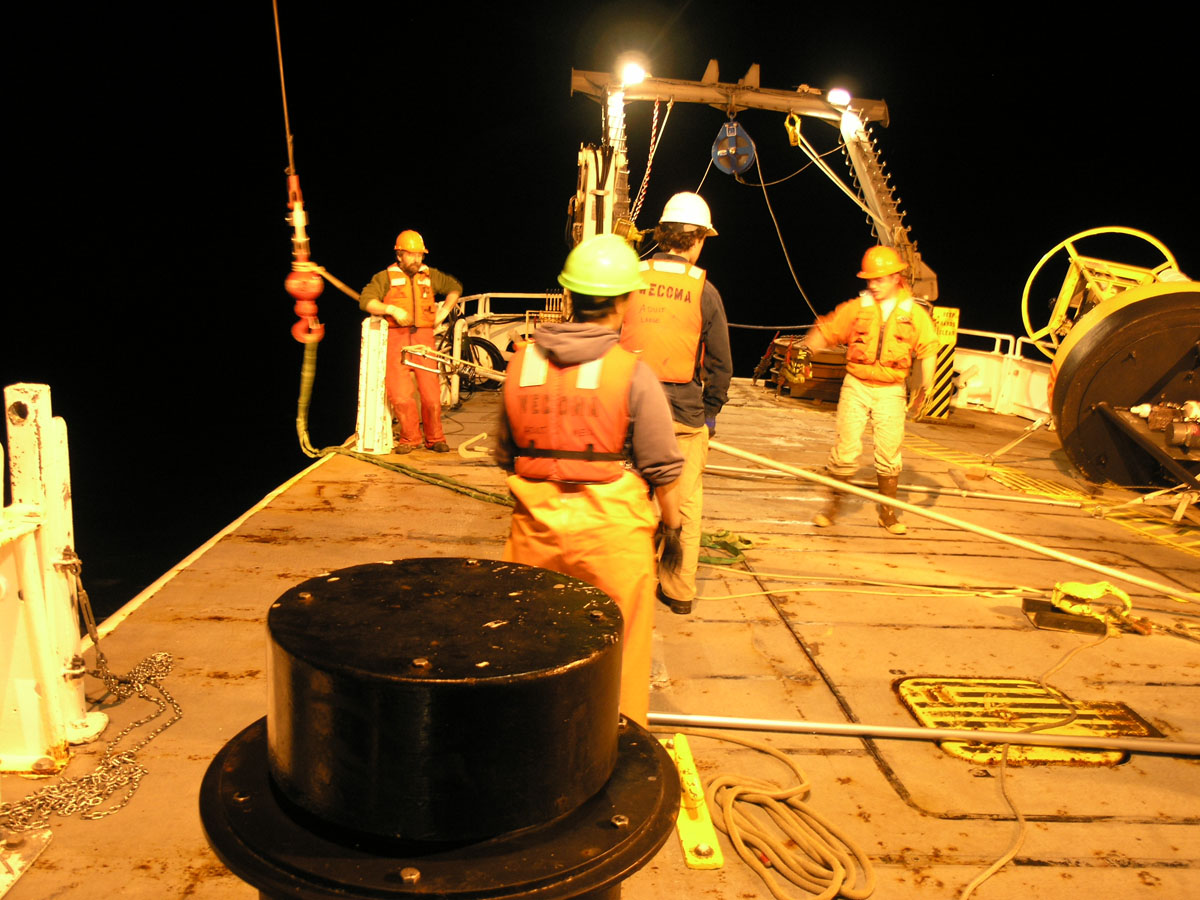You are here
Wecoma Cruise -- Sep 2011
Loading day. We kept on schedule. Buoys destined for NH-10, OGI-01 and SATURN-02 were secured to the deck. Water processing equiment was installed in the wet lab. The science party arrived safely and all slept on board, ready for the 10am Tues departure. At the meeting on the bridge with the captain and mates it was decided assess the situation in the morning.
9/27/2011 Tuesday
Unfortunately, the weather was not cooperating. The wind speed fell, but the waves got bigger. Forecasts indicated 20 ft waves were coming our way. We therefore decided not to leave on time as we probably would not be able to work anyway. The wave forecast indicated decreasing amplitude would occur as the day went on. So, we decided to wait at the dock until the beginning of the next flood tide.
 We did have the safety drill and lecture at 10am. A new custom aboard the Wecoma is to have this briefing before sailing. This is much more comfortable than trying to listen just after the ship enters the ocean. We all tried on our survival suits—another new Wecoma procedural change.
We did have the safety drill and lecture at 10am. A new custom aboard the Wecoma is to have this briefing before sailing. This is much more comfortable than trying to listen just after the ship enters the ocean. We all tried on our survival suits—another new Wecoma procedural change.9/28/11 Wednesday
 The expert CTD team led by Suzanne DeLorenzo worked after dinner starting at NH-3*. They did casts at NH-10*, NH-15, NH-20, NH-25* (note that * = water was taken). Last cast ended just before mid-night.
The expert CTD team led by Suzanne DeLorenzo worked after dinner starting at NH-3*. They did casts at NH-10*, NH-15, NH-20, NH-25* (note that * = water was taken). Last cast ended just before mid-night.
We then transited north to the OGI-01 site. We were in the trough much of the time while traveling northward. For some, this interrupted sleep much of the night.
We were at OGI-01 by 0700 PT. After breakfast the last components of the mooring were assembled.  The buoy was deployed by rolling it over the starboard side. Finished by 0830 PT.
The buoy was deployed by rolling it over the starboard side. Finished by 0830 PT.
Since glider Phoebe as about 60 nmiles north, we decided to make a run to retrieve it. This will require use of the ship’s RHIB (rigid hull inflatable boat). Better go, don’t want to be late to lunch.
Murray Levine, reporting from the R/V Wecoma
9/29/2011 Thursday
 Phoebe recovery was indeed planned to involve the RHIB. However, getting the boat down from the top deck is complicated and time consuming. So, since the weather was ideal, retrieval was done the old-fashioned way by leaning over and grabbing it. There were many people with poles and nets of various configurations to help coax the glider into Michael Wilkin’s arms—well done.
Phoebe recovery was indeed planned to involve the RHIB. However, getting the boat down from the top deck is complicated and time consuming. So, since the weather was ideal, retrieval was done the old-fashioned way by leaning over and grabbing it. There were many people with poles and nets of various configurations to help coax the glider into Michael Wilkin’s arms—well done.Now we are headed toward the NH line to tend to the NH-10 buoy. It is about 8 hours away. We will also try to pick up an OSU glider on the way. We did see briefly a few orca whales on this leg of the trip so far.
Murray Levine, reporting from the R/V Wecoma

| Attachment | Size |
|---|---|
| 205.92 KB | |
| 283.09 KB | |
| 357.36 KB | |
| 266.33 KB | |
| 373.36 KB |



